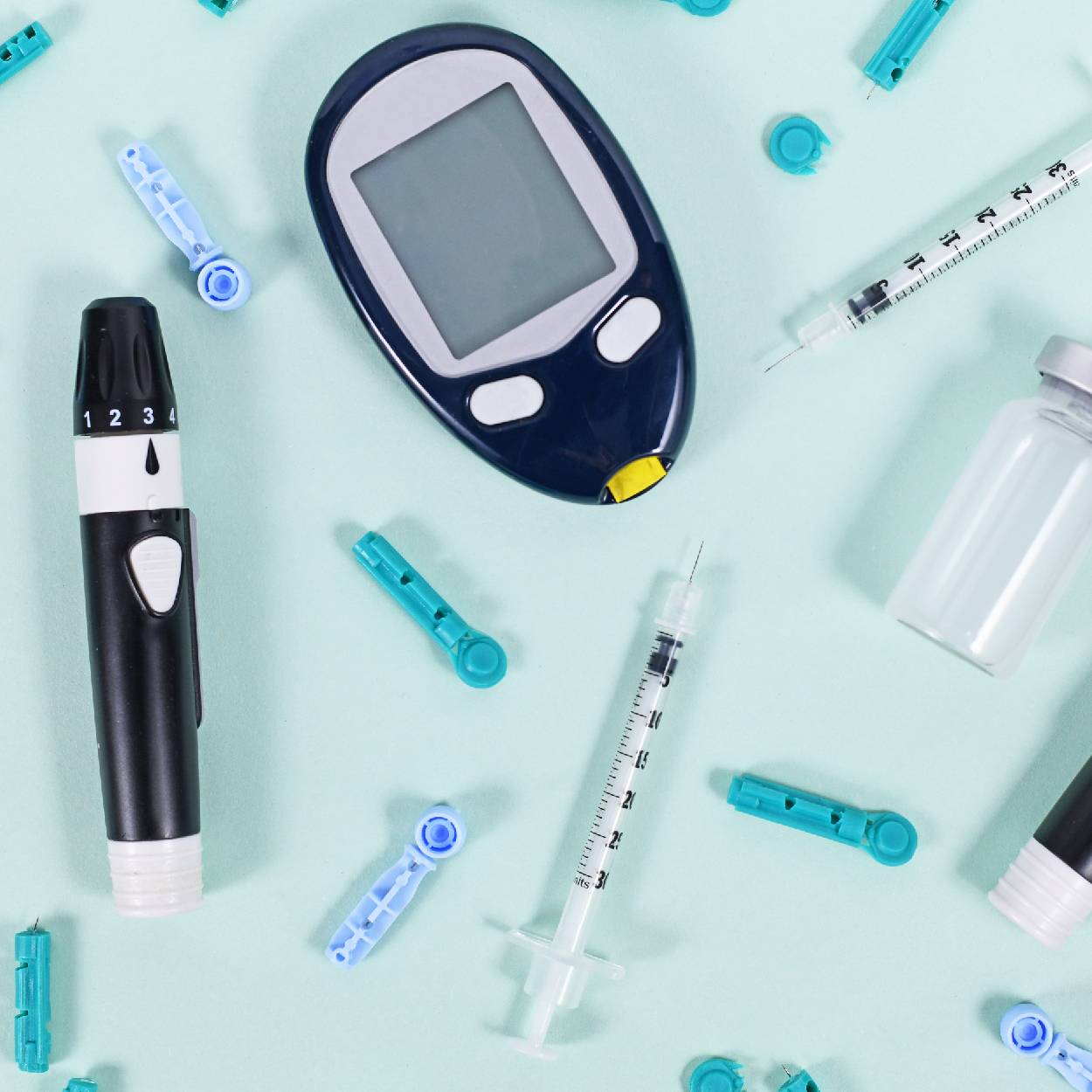Even though it is a vital hormone, playing an extremely important role in normal metabolic functioning, cortisol has also earned the reputation of being a very dangerous hormone when not properly regulated by the body. It is the outlaw that needs to be reined in and put under strict policing. And since cortisol can wreak havoc on an already compromised biochemical environment in the cells, its control takes on an even greater urgency for people with diabetes.
Cortisol is synthesized from cholesterol by the adrenal glands, located at the top of each kidney. Steroid hormones like cortisol, when functioning normally, act to control blood glucose levels, burn or process protein and fats, and regulate blood pressure. Cortisol’s main responsibility is to restore homeostasis (or balance) after the body experiences stress, so it is known as the fight-or-flight hormone. What may not be as well known is the fact that cortisol is also involved in the transport of amino acids (involved in protein synthesis) and that it plays a role in maintaining a healthy immune response, in addition to regulating or promoting memory. Since it is such a complex and versatile chemical, it most likely has other functions that have not been scientifically documented.
Cortisol can be called a “social” hormone. Like people, it acts and reacts differently under different “social situations.” With cortisol, these situations, or interactions with other chemical substances in the body tend to vary according to the emotional and physical state of the individual. It can be a wicked demon, causing grave illness, and it can be (and usually is) a life-saving angel that promotes fat loss, insulin regulation, and overall optimum health. For this reason, it has been nicknamed the Dr. Jekyll/Mr. Hyde hormone by researchers and writers in the field, and the analogy certainly appears to be appropriate in explaining its seemingly dual “personality.” The trick is to make sure that, to the extent possible, we keep the Dr. Jekyll side in control so that the Mr. Hyde alter ego never surfaces.
When it is present within normal limits, we see the Dr. Jekyll persona of cortisol. Its work in conjunction with insulin, in what can be considered an antagonistic relationship, is well-documented. So suffice it to say that as long as one doesn’t overpower the other, the body benefits. Cortisol’s effect on the immune response has also been well-documented. In the Dr. Jekyll mode, it acts to decrease inflammation. But in the case of chronic inflammation or other events that basically wear down immunity–in the Mr. Hyde mode–cortisol is kept at a very high level. Its constant release adversely affects the activity of T-lymphocytes (T-cells), an essential component of the body’s defense against disease, thus hampering the immune response. This can result in a greater susceptibility to colds, an increased risk of cancer, and gastrointestinal problems.
Cortisol has also been implicated in cardiovascular disease. As Dr. Jekyll, it appropriately constricts blood vessels and increases blood pressure to carry out the fight-or-flight response. But then again, when continuously released due to what is perceived as an incessant threat by the brain, it becomes Mr. Hyde, leading to persistently high blood pressure and vessel damage. As if this were not enough, fertility problems, thyroid disorders, dementia, and chronic fatigue syndrome are all manifestations of excess cortisol. So the problem is not that cortisol exists’ the danger lies in its levels and timing.
Controlling the amount of cortisol and its time of release from the adrenal glands is thus the key to keeping it in the Dr. Jekyll mode. Many people, diabetics in particular, have probably grown weary of being told to reduce their stress level, but what is the most important thing to do in order to reduce the harmful effects of too much cortisol? Reduce your stress level. You may add massage, warm baths, physical affection, and even laughter to the list of “things to do” in order to rid yourself of stress.
There is actually a test to measure the level of cortisol in your body; it is a simple procedure that is performed at your doctor’s office. A blood sample is taken and the test is usually performed in the morning or late in the day. Cortisol levels typically are high in the early morning hours and drop significantly at night. Your physician will decide on the time to carry out the measurement, based on your health history and any symptoms that you are currently showing. The doctor will also need to be informed of any prescription or non-prescription drugs that you are taking, since many drugs have an adverse effect on cortisol levels.
If you think about it, when cortisol is being discussed, it is always mentioned in relation to an action or the occurrence of something. So we can almost think of cortisol as a verb, rather than as a noun. It is an action that quite often needs a counter-action to keep it in check. So when the amount of cortisol in your body is too high, you could say that you have been “cortisoled.” In this sense, many diabetics need to be de-cortisoled or de-stressed.
The time has come for us to acknowledge cortisol as the Pit Bull hormone that it is. The many roles that it plays in the body are crucial in sickness and in health, and are of particular importance to those suffering from diabetes. If we have a firm understanding of how it works, as well as why and when it tends to be higher than normal, perhaps we can learn to control it.




